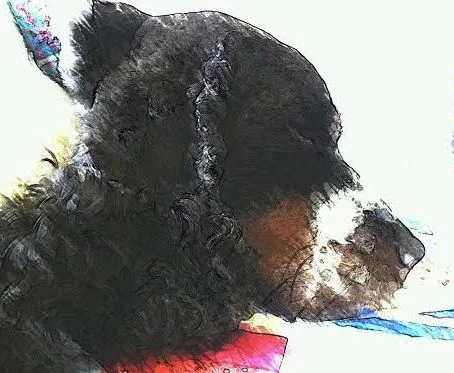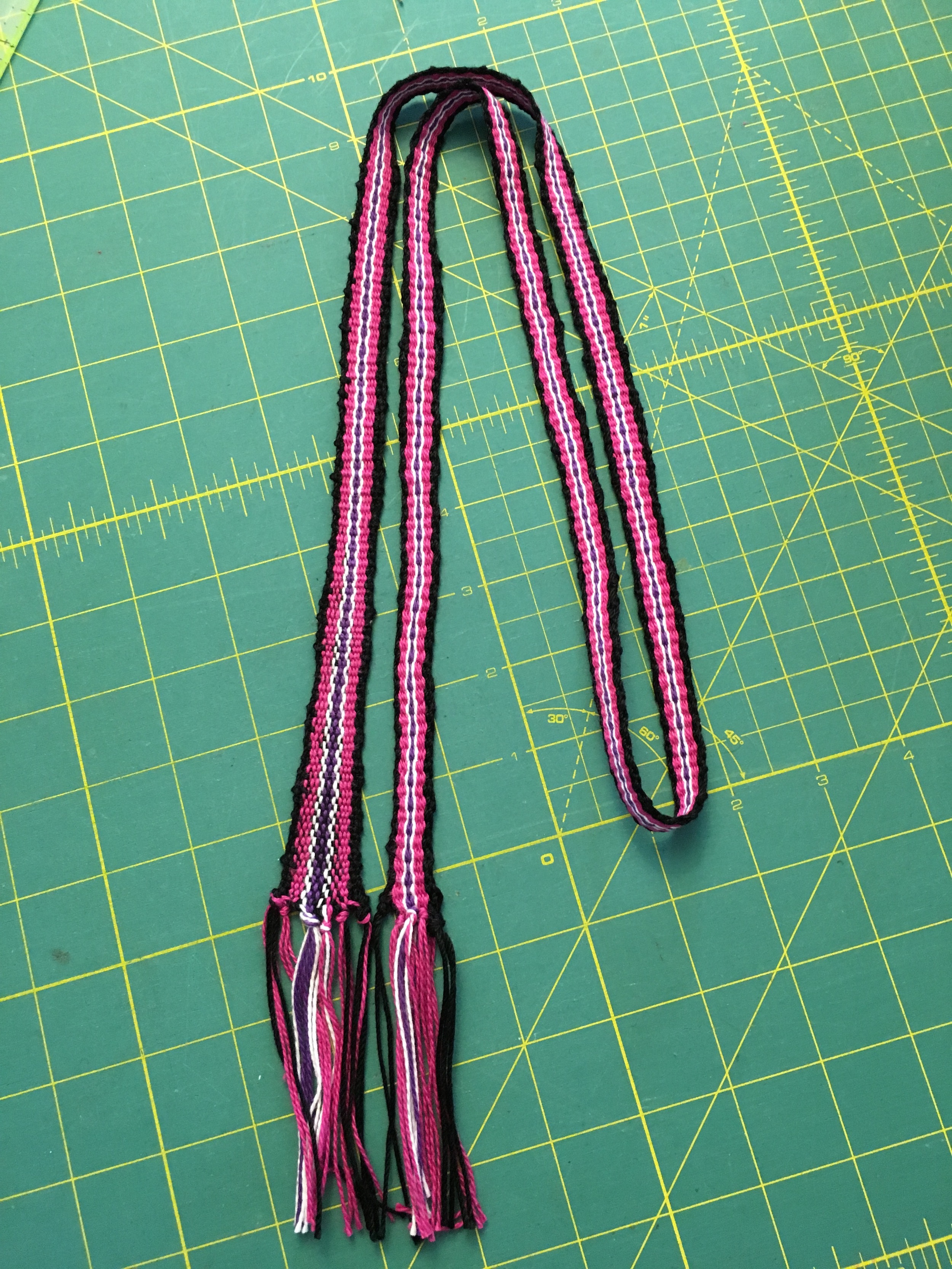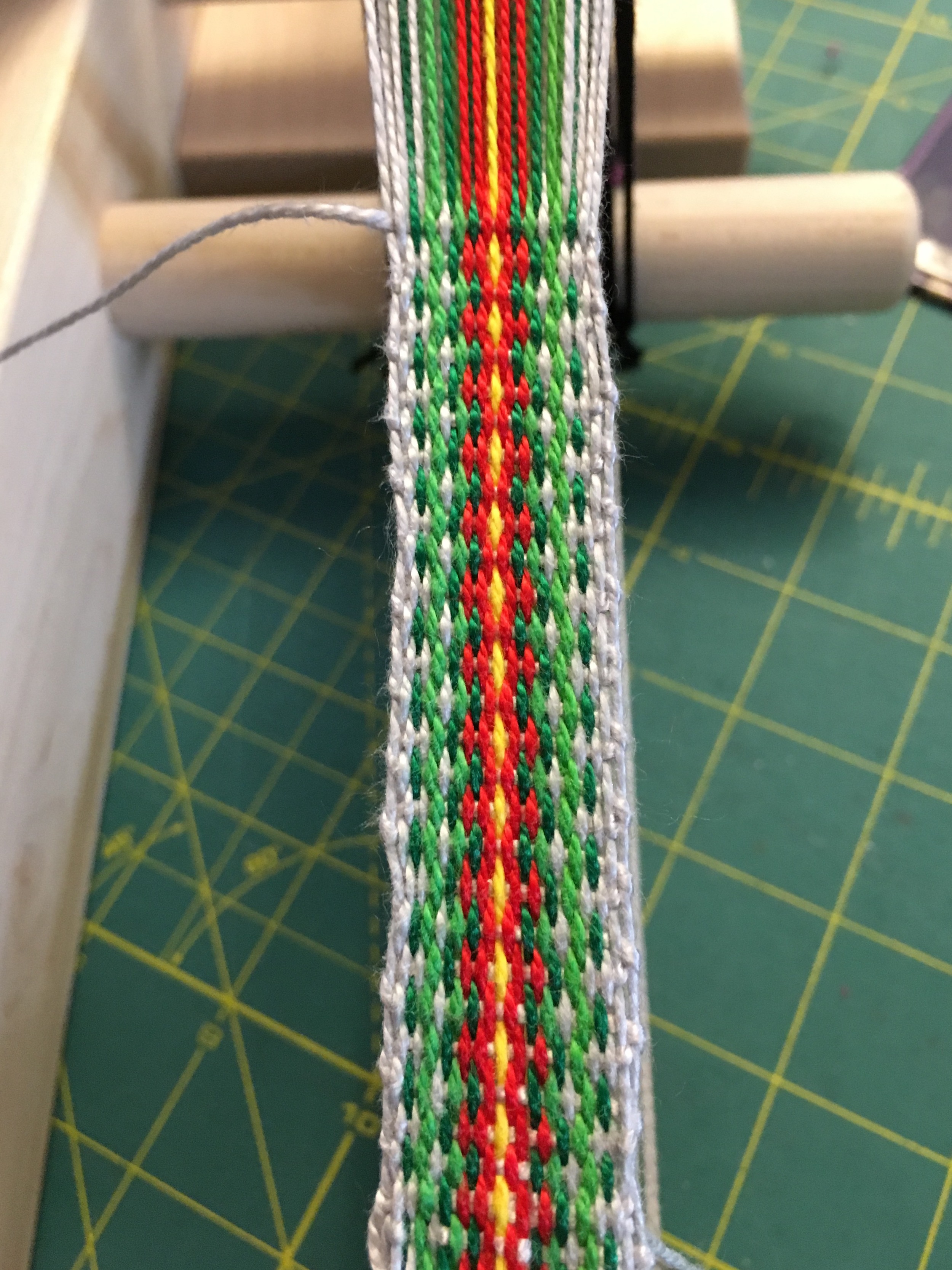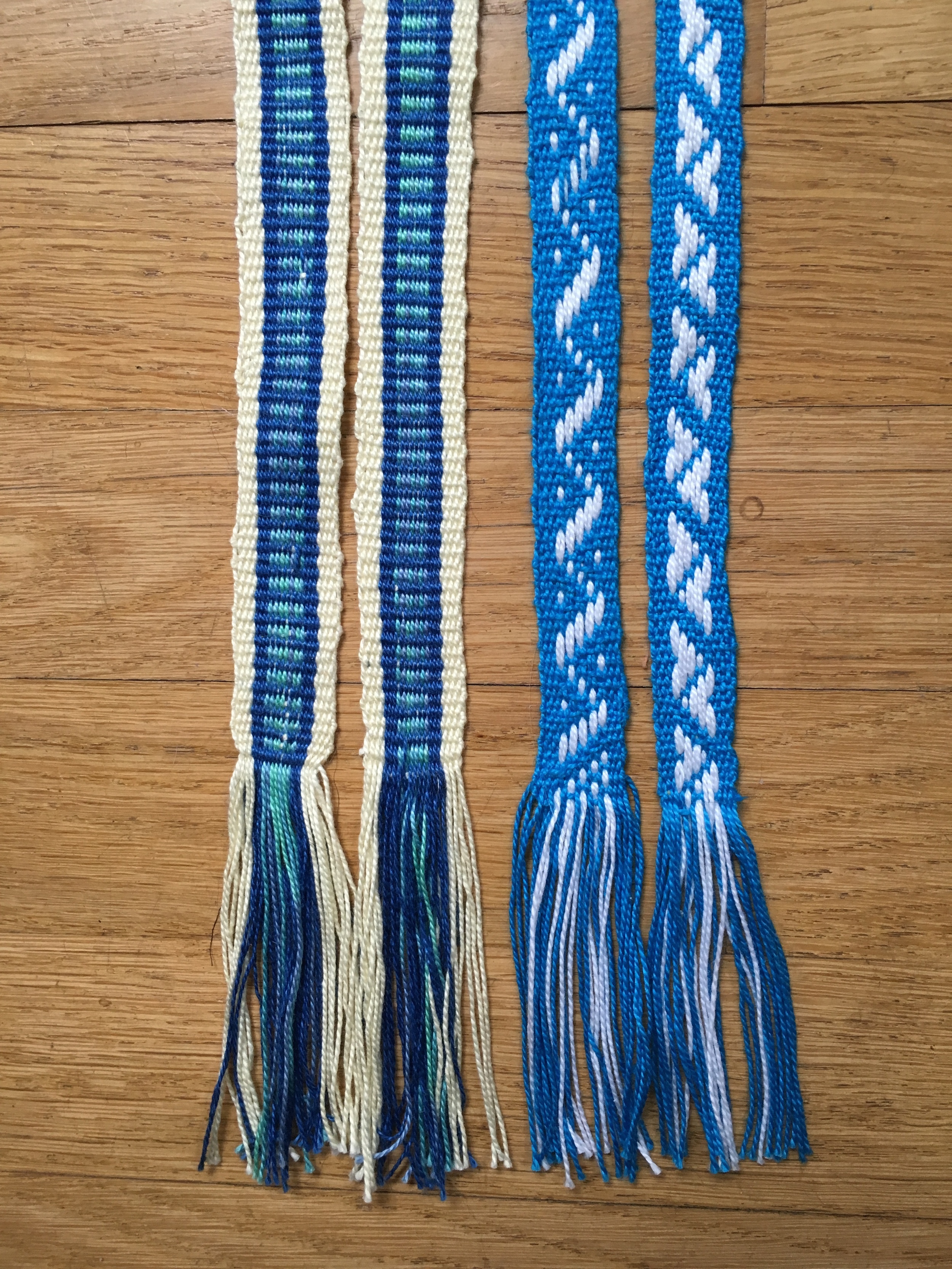Child's cotton Valentine Belt
Happy Valentine's Day!
Last summer one of my friends purchased a rigid heddle loom. I went over to her house to admire it. While we were talking I mentioned I'd always thought it would be fun to have an inkle loom. The word "Inkle" goes back at least to the 1500s but the origin of the word is unknown. An Inkle is a linen tape used for laces and for trimming on clothing. An inkle loom is used today to weave narrow bands--shoelaces to guitar bands and to make bands to decorate shirts and sweaters. The idea of weaving something that could be done fairly quickly is really appealing to me.
Several of us went out for breakfast to celebrate my birthday a couple months ago. In comes one friend carrying a big, long box. My friends had gone in together and got me a Schacht inkle loom! These are great friends!!
Inkle loom with a warp, ready to start weaving
I'd done a little bit of simple tapestry weaving as a child so I had a very basic understanding about weaving. I watched several YouTube videos and got several great books. Despite my childhood experience it was like learning a new language!
But these are bands, not blankets, so I set up the loom and gave it a try. I learned a lot weaving that first band. It started out way too loose (a common problem for beginners), ended up too tight and has lumpy selvages. But I was beginning to have feel for weaving a narrow band. Each subsequent band shows improvement.
Left to right: My first attempt, my second band (still having selvage problems), my third band (a bit better) and my first Baltic pick-up weave.
The Valentine design at the top is my most recent band. It is a Baltic weave pattern. I used the band to make a child's belt and a couple of bookmarks. All the designs shown here are from the book, The Weaver's Inkle Pattern Directory by Anne Dixon.
Plain weave is fun and fast! The decisions about design are all made when the loom is warped. But I'm particularly drawn to pick-up patterns where the design is created by picking up specific threads from the warp as each row is woven. Pick-up weaving is a lot slower and requires full attention but I love the results. In the photo of the blue band at the far right above you can see that both sides of the band have a pattern.
In my next post I'll share some of the books that I've found very helpful learning to band weave.





